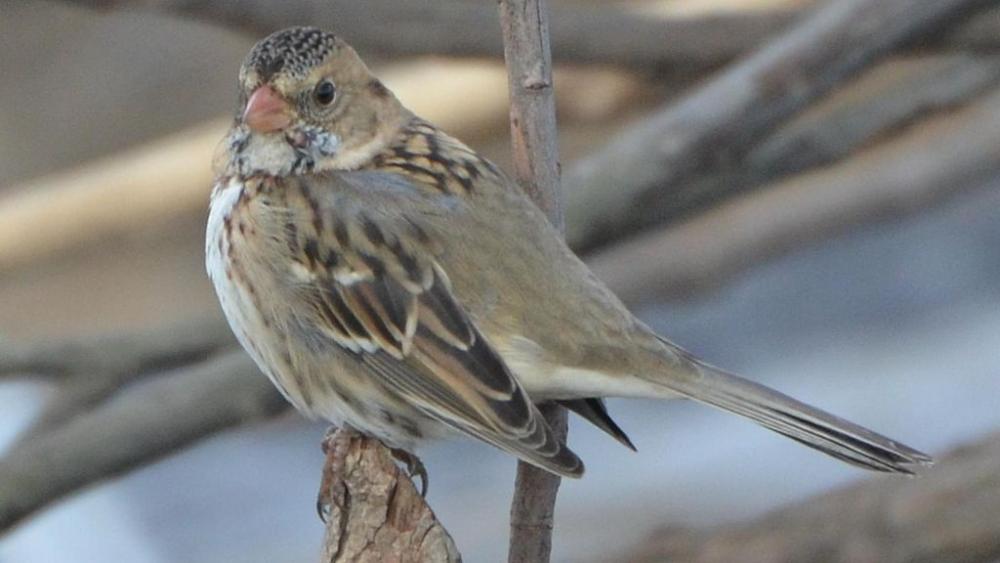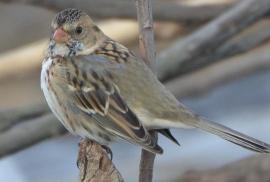Guide to Boreal Birds
Overview
These large, handsome sparrows rarely stray far from their normal Midwestern range. They vigorously scratch in the leaves and soil for food, and eat weed seeds, flower buds and blossoms, small fruits such as berries, and a great variety of insects, spiders, and snails. In winter, Harris's Sparrows mix with and generally dominate flocks of the more numerous White-crowned and Golden-crowned sparrows. When a flock is disturbed it often flies up to the top of a nearby bush. This sparrow is shyer and warier in its northern breeding territory. It was named by Audubon for Edward Harris (1799-1863), who accompanied him on his western trip in 1843.The nest and eggs of Harris's Sparrow were not discovered and described to science until 1931 when several teams of ornithologists arrived in Churchill, Manitoba, all competing for the honor of the discovery. The species breeds in the northern boreal forest region in the zone where the tundra and tree habitats intermingle. It prefers shrubby areas with scattered coniferous trees. Perhaps the most serious and pervasive threat to the species comes from the massive habitat alterations expected from continuing global warming.
Description
7 1/2" (19 cm). Adult has black crown, throat, and chest; pink bill; gray face; brown back, wings, and tail; and white abdomen with spotted or streaked sides. Immatures have buff faces and lack solid black crown, throat, and breast.
Voice
Series of clear, high notes followed by another series, each on a different pitch.
Nesting
3-5 pale green, brown-blotched eggs in a plant-fiber and leaf nest, lined with grass and placed on the ground at the base of a bush or in a stunted spruce tree.
Habitat
Breeds in mossy bogs and scrub forests; migrates through the prairie regions; winters in dense riverside thickets, woodland borders, clearings, and brush piles.
Range/Migration
Breeds in northern Canada west of Hudson Bay south to northern Manitoba. Winters in interior from Iowa and Nebraska south to Texas and Louisiana. Stragglers reach Pacific Coast nearly every year.



